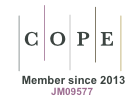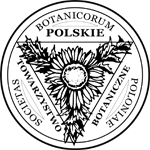Statistical correlations in winter triticale hybrids
Abstract
Keywords
Full Text:
PDFReferences
Goryanina ТА. The Formation of grain productivity in nurseries of winter rye and triticale. Proceedings of the Samara Scientific Center of RAS. 2015;17(3):510–513.
Ковтуненко [Kovtunenko] ВЯ [VJ]. Селекция озимой и яровой тритикале различного использования для условий Северного Кавказа [Selekcija ozimoj i jarovoj tritikale razlichnogo ispol’zovanija dlja uslovij Severnogo Kavkaza] [Thesis]. Краснодар [Krasnodar]: [publisher unknown]; 2009.
Gruszecka D, Tarkowski C, Stefanowska G. Cytological analysis of F1 aegilops hybrids with Triticosecale. In: Guedes-Pinto H, Darvey N, Carnide VP, editors. Triticale: today and tomorrow. Dordrecht: Springer; 1996. p. 195–201. (Developments in Plant Breeding; vol 5). https://doi.org/10.1007/978-94-009-0329-6_24
Thompson P. The causes of the cytological results obtained in species crosses in wheat. Can J Res. 1934;10:190–198.
Sodkiewicz W, Strzembicka A, Apolinarska B. Chromosomal location in triticale of leaf rust resistance genes introduced from Triticum monococcum. Plant Breed. 2008;127(4):364–367. https://doi.org/10.1111/j.1439-0523.2007.01485.x
Grabovets AI, State and directions of triticale breeding. Triticale of Russia: selection, agrotechnology of cultivation, processing and use of raw materials from triticale. In: Proceedings of the Meeting of the section triticale RASKHN. Rostov-on-Don: [publisher unknown]; 2000. p. 6–12.
Goryanina ТА. Influence of climatic conditions on the yield of winter triticale during global warming. Agrarian Scientific Journal. 2015;8:12–16.
Wolf VG. Statistical processing of the trial data. Moscow: Kolos; 1966.
Eberhart SA, Russel WA. Stability parameters for comparing varieties. Crop Sci. 1966;1:36–40.
Мережко [Merezhko] АФ [AF], Удачин [Udachin] РА [RA], Зуев [Zuev] ЕВ [EV], Филатенко [Filatenko] AA [АА], Сербин [Serbin] АА [AA], Ляпунова [Ljapunova] ОА [OA], et al. Пополнение, сохранение в живом виде и изучение мировой коллекции пшеницы, эгилопса и тритикале [Popolnenie, sohranenie v zhivom vide i izuchenie mirovoj kollekcii pshenicy, jegilopsa i tritikale]. Санкт-Петербург [Sankt-Peterburg]: ВИР [VIR]; 1999.
Meteorological and agrometeorological data. Bezenchuk: Bezenchuk meteorological station; 2011–2017.
Максимов [Maksimov] НГ [NG]. Гибридизация озимых гексаплоидных тритикале с озимой мягкой пшеницей [Gibridizacija ozimyh geksaploidnyh tritikale s ozimoj mjagkoj pshenicej] [Thesis]. Харьков [Har’kov]: Всесоюз. акад. с.-х. наук им. В. И. Ленина. Юж. отд-ние. Укр. науч.-исслед. ин-т растениеводства, селекции и генетики им. В. Я. Юрьева [Vsesojuz. akad. s.-h. nauk im. V. I. Lenina. Juzh. otd-nie. Ukr. nauch.-issled. in-t rastenievodstva, selekcii i genetiki im. V. Ja. Jur’eva]; 1975.
Popov P, Tsvetkov S. The results of the breeding of primary and secondary hexaploid triticale (2n = 42). Triticale. Study and breeding. Leningrad: All-Russian Institute of Plant Genetic Resources; 1975.
Kobylianskii VD. Genetic resources of worlds rye collection for solving of more important breeding problems. Hod Rośl Aklim Nas. 1975;19(5–6):495–501.
Уткина [Utkina] ЕИ [EI]. Селекция озимой ржи в условиях Волго-Вятского региона [Selekcija ozimoj rzhi v uslovijah Volgo-Vjatskogo regiona] [Thesis]. Киров [Kirov]: [publisher unknown]; 2017.
Коршунова [Korshunova] АД [AD], Дивашук [Divashuk] МГ [MG], Соловьев [Solov’ev] АА [AA], Карлов [Karlov] ГИ [GI]. Анализ распределения генов короткостебельности пшеницы и ржи среди сортообразцов яровой гексаплоидной тритикале (Triticosecale Wittm.) [Analiz raspredelenija genov korotkostebel’nosti pshenicy i rzhi sredi sortoobrazcov jarovoj geksaploidnoj tritikale (Triticosecale Wittm.)]. Генетика [Genetika]. 2015;51(3):334. https://doi.org/10.7868/S0016675815030078
Горянина [Gorjanina] ТА [ТА]. Селекционная ценность исходного материала озимой тритикале в условиях Среднего Поволжья [Selekcionnaja cennost’ ishodnogo materiala ozimoj tritikale v uslovijah Srednego Povolzh’ja] [Thesis]. Безенчук [Bezenchuk]: [publisher unknown]; 2004.
Абдулаева [Abdulaeva] АК [AK]. Гибридизация тритикале с рожью как метод получения генетически новых форм пшенично-ржаных рекомбинантов [Gibridizacija tritikale s rozh’ju kak metod poluchenija geneticheski novyh form pshenichno-rzhanyh rekombinantov] [Thesis]. Ленинград [Leningrad]: [publisher unknown]; 1983.
Орловская [Orlovskaja] ОА [OA], Каминская [Kaminskaja] ЛН [LN], Хотылева [Hotyleva] ЛВ [LV]. Интрогрессия генетического материала эгилопса в геном гексаплоидных тритикале [Introgressija geneticheskogo materiala jegilopsa v genom geksaploidnyh tritikale]. Генетика [Genetika]. 2007;43(3):363–368.
Дивашук [Divashuk] МГ [MG], Соловьёв [Solov’jov] АА [AA], Карлов [Karlov] ГИ [GI]. Влияние отбора по фенотипическим признакам на хромосомную конституцию яровой тритикале [Vlijanie otbora po fenotipicheskim priznakam na hromosomnuju konstituciju jarovoj tritikale]. Генетика [Genetika]. 2010;46(3):383–388.
Жученко [Zhuchenko] AA [AA]. Роль адаптивной системы селекции в растениеводстве XXI века [Rol’ adaptivnoj sistemy selekcii v rastenievodstve XXI veka]. In: Семина [Semina] АС [AS], editor. Коммерческие сорта полевых культур Российской Федерации [Kommercheskie sorta polevyh kul’tur Rossijskoj Federacii]. Москва [Moskva]: ИКАР [IKAR]; 2003. p. 10–15.
Косолапов [Kosolapov] ВМ [VM], Козлов [Kozlov] НН [NN], Клименко [Klimenko] АИ [AI]. Экологическая селекция многолетних кормовых трав [Jekologicheskaja selekcija mnogoletnih kormovyh trav]. Кормопроизводство [Kormoproizvodstvo]. 2015;4:25–29.
Володин [Volodin] АВ [AV]. Новые сорта и гибриды сахарного сорго для силоса и зеленого корма [Novye sorta i gibridy saharnogo sorgo dlja silosa i zelenogo korma]. Кормопроизводство [Kormoproizvodstvo]. 2015;4:16–20.
Жученко [Zhuchenko] AA [AA]. Адаптивный потенциал культурных растений: эколого-генетические основы [Adaptivnyj potencial kul’turnyh rastenij: jekologo-geneticheskie osnovy]. Кишинев [Kishinev]: Штиинца [Shtiinca]; 1988.
DOI: https://doi.org/10.5586/aa.1778
|
|
|






